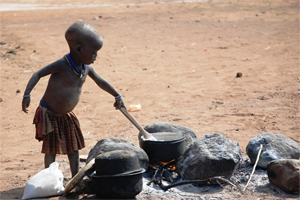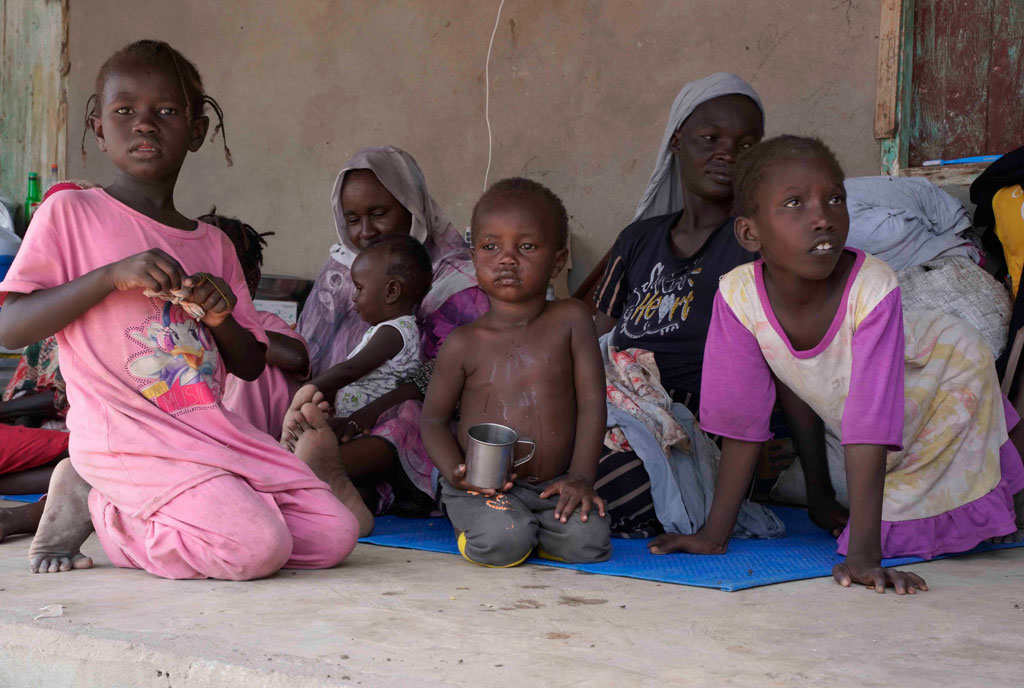Achieving zero hunger still possible

Hunger has forced many young children to take over adult roles like preparing meals for each other like this child whose mother has to trek long distances in search of more food for her children. This child was preparing a meal of posho for her siblings. PHOTO / FILE
What you need to know:
- Smallholder farmers need better access to viable markets for their crops, enabling them to move beyond subsistence and build reliable livelihoods.
This year marks the halfway point for implementing the Sustainable Development Goals (SDGs), the ambitious set of global targets introduced by the United Nations in 2015. These 17 goals, devised to address today’s most pressing challenges and put the world on the path to sustainability, seek to reduce poverty, improve access to health care and education, and mitigate the worst effects of climate change by 2030. But when it comes to meeting the critical goal of eradicating food insecurity, much of the progress made over the past decade has been undone.
When the SDGs were launched, the target of eliminating food insecurity and malnutrition worldwide within 15 years seemed ambitious but within reach. At the time, hunger levels had been trending lower for more than two decades, largely thanks to rising agricultural productivity and global economic growth.
Compounding crises
Over the past few years, however, the world has been hit by a series of compounding crises, from the Covid-19 pandemic and the ongoing war in Ukraine to extreme weather events caused by climate change. As a result, global hunger has surged, with the world’s poorest people suffering the most.
According to a new UN report, approximately 735m people are experiencing food insecurity, an increase of 122m people since 2019. Alarmingly, seven countries – Somalia, Afghanistan, Burkina Faso, Haiti, Nigeria, South Sudan, and Yemen – are now on the brink of famine. Not only are we falling short of reaching zero hunger by 2030, but we are worse off than we were in 2015.
So, where do we go from here? To meet the UN’s zero-hunger target, we must first recognise who makes up the majority of the world’s poor and understand where most of their food comes from. The answer to both questions is surprisingly straightforward.
The vast majority of the world’s poorest individuals are the smallholder farmers who also produce most of the food consumed in many developing countries. These farmers have been hit hard by the shocks of the past few years, in addition to the systemic challenges that have kept them trapped in poverty and food insecurity. Yet within the current crisis lies an opportunity. By supporting smallholder farms, the international community could make significant strides toward ending global hunger.
Governments and international institutions can aid smallholder farmers and eliminate global food insecurity in several ways. First, most smallholder farms in developing countries generate disproportionately low crop yields compared to their developed-country counterparts, largely because they lack basic inputs, such as improved seeds and organic fertilisers. This is particularly evident in sub-Saharan Africa, where yields for staple food crops are significantly lower than global averages. Increasing access to high-quality farm inputs, especially those that help farmers adapt to climate change, could thus greatly enhance food security.
Second, lack of access to credit prevents most smallholder farmers from purchasing improved agricultural inputs or investing in their farms. Global support for programmes that provide these farmers with financing would help.
Third, smallholder farmers typically harvest crops once or twice a year. This means that food must be stored for months to ensure that supplies last until the next harvest. Given the limited access to proper storage technology, staple food grains are frequently exposed to damage by insects, mold, and other pests, contributing to post-harvest crop losses and household hunger. These smallholder farms require greater access to advanced storage options, including low-cost, hermetically sealed bags that can preserve crops for extended periods and eliminate the need to treat stored grains with potentially harmful insecticides.
Finally, smallholder farmers need better access to viable markets for their crops, enabling them to move beyond subsistence and build reliable livelihoods. The international community, alongside public- and private-sector actors, must do more to bolster local capacity and encourage investment in agricultural value chains. This would empower more smallholders to develop sustainable businesses.
The author, Jordan Dey, is CEO of GrainPro, a social-enterprise company that supports organic, chemical-free drying, storage, and transport of crops
-- Project Syndicate




